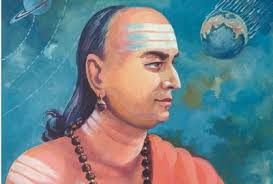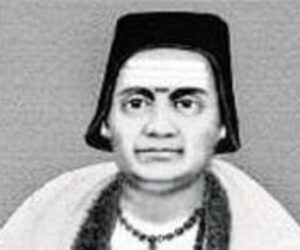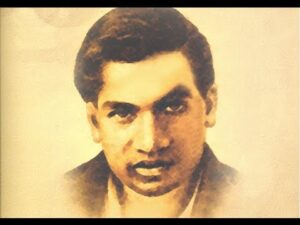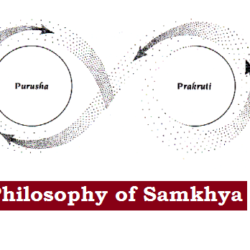
Aryabhata (5th– 6th century AD, Patliputra)
2015 (20’) 2012 (40’)

Aryabhata is the author of several treatises on mathematics and astronomy. Some of the important works are Aryabhatiya and Arya-siddhanta.
Major Contribution to Mathematics:
- Place value system and zero
- Approximation of π (accurate to five significant figures)
- Trigonometry (area of a triangle and the concept of sine as ardha-jya)
- Algebra (summation of series of squares and cubes)
Major Contribution to Astronomy:
- Motions of the solar system (geocentric and heliocentric models of solar system, order of the planets in terms of distance from earth)
- Eclipses (Solar and lunar eclipses against the prevailing cosmogony of pseudo-planetary demons Rahu and Ketu)
- Duration of the year and the day (earth rotation on its own axis)
Varahamihira (6th Century AD, Ujjain)

He was an astronomer, mathematician and also an astrologer. He is considered to be one of the Navaratnas of the court of legendary ruler Yashodharman Vikramaditya of Avanti.
His important works are:
- Pancha-Siddhantika: a treatise on mathematical astronomy, summarizes five earlier astronomical treatises
- Brihat-Samhita: known as the “great compilation”, covers wide ranging subjects of human interest, including astrology, planetary movements, eclipses, rainfall, clouds, architecture, growth of crops, manufacture of perfume, matrimony, domestic relations, gems, pearls, and rituals
- Brihat Jataka: on astrology
Major Contribution:
- Trigonometric identities (cos2x + sin2x = 1, etc)
- Defined algebraic properties of zero as well as of negative numbers
- A version of what is now known as the Pascal’s triangle
- Covered Reflection and Refraction
- Equinox
Brahmagupta (6th -7th Century, Ujjain)

He was born in modern day Bhinmal, near Jalore in Rajasthan and was the head of the astronomical observatory at Ujjain. His important works are Brahmasphuṭasiddhanta (Extensive Treatise of Brahma) (628), a theoretical treatise, and the Khaṇḍakhadyaka, a more practical text.
Major Contribution:
- The first to formulate the rules to compute with zero
- Interpolation of sine function
- Observed that the Earth and heaven were spherical and that the Earth is moving
- Gives the idea of Gravitation as the nature of earth (as in the nature of water to flow)
Bhaskaracharya (also Bhaskar II) (12th Century, Ujjain)

He was born near Bijapur (Karnataka) and was the head of an astronomical observatory at Ujjain. His main work Siddhānta Shiromani, (“Crown of treatises”) is divided into 4 parts; Lilavati (dealing with arithmatic), Bijaganita (dealing with algebra), Grahaganita (astronomical calculations) and Goladhyaya (spherical trigonometry).
Major Contribution:
- Surds (includes evaluating surds)
- Conceived that when a finite number is divided by zero, the result is infinity
- A proof of the Pythagorean theorem
- Computation of sines of angles of 18 and 36 degrees, and the now well known formulae for sin (a+b )and sin (a-b).
- Conceived the differential coefficient and differential calculus and their application to astronomical problems and computations
Srinivasa Ramanujan (1887-1920, Madras)

He received no formal education but stood first in high school examination in the district. Got scholarship for higher studies. He was appointed to the post of clerk where he continued with his research in mathematics. He began a famous partnership with the English Mathematician GH Hardy. He was elected to the Royal Society of London.
The National Mathematics Day is observed every year on 22nd December on his birth anniversary.
Autobiography and Movie: The feature film “The Man Who Knew Infinity” was based on his life.
Major Contribution:
- He worked on Algebra, Geometry, Trigonometry, Calculus, Number Theory and others
- Ramanujan Number: 1729= 13+123=93+103, smallest to be represented as some of two cubes in two different ways
- Besides his several published works, he left behind many notebooks filled with theorems that are still being studies.
- His mathematical methods are used undersigning better furnaces for smelting metals and splicing telephone cables for communications.

 Home
Home Syllabus
Syllabus Contact Us
Contact Us




